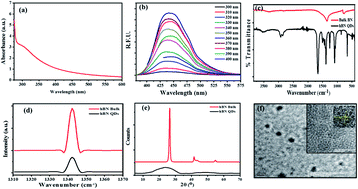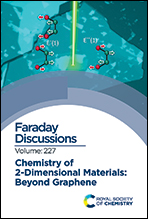White graphene quantum dots as electrochemical sensing platform for ferritin
Abstract
The use of hexagonal boron nitride quantum dots (hBN QDs) as an electrochemical sensor for ferritin is reported for the first time. These QDs were synthesized using a simple liquid exfoliation method. The synthesized material was characterized using analytical techniques such as UV-visible, Fourier transform infrared (FTIR) and Raman spectroscopy, X-ray diffraction (XRD), and high-resolution transmission electron microscopy (HR-TEM) to study different aspects of the QDs. These QDs were explored for their plausible application as a platform for the electrochemical detection of ferritin. For this, electrochemical impedance spectroscopy was used as a sensing technique and disposable hBN QD functionalized screen printed electrodes were used as a sensing platform. The developed immunosensor had a dynamic linear range from 10–2000 ng mL−1 of ferritin concentration with a limit of detection of 1.306 ng mL−1. The immunosensor was highly selective, did not deviate in the presence of interfering agents and was also highly reproducible.

- This article is part of the themed collection: Chemistry of 2-dimensional materials: beyond graphene


 Please wait while we load your content...
Please wait while we load your content...